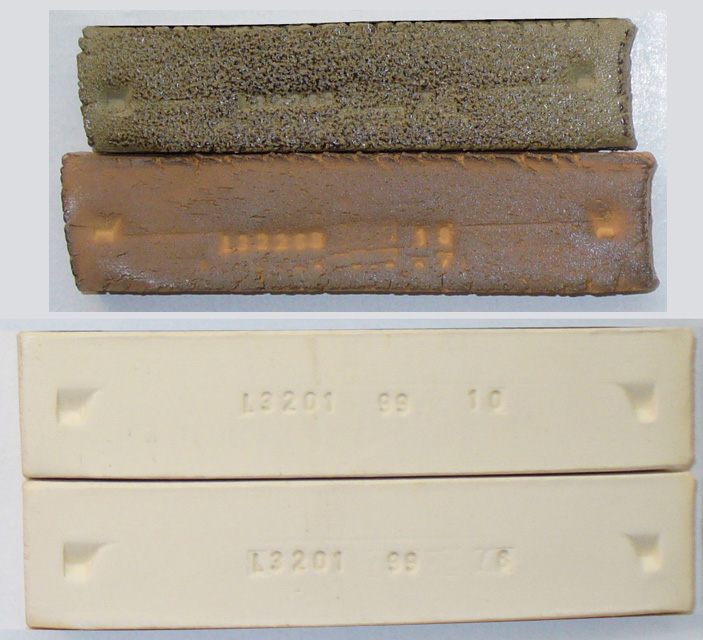Natural bentonites fire to a surprisingly dirty surface!
Pure HPM-20 micro-fine insight-live.com/material/106">bentonite fired to cone 8 (top) and cone 2 (bottom) oxidation (it is actually a mix of raw and calcined material to make it possible to make the bars). Below that is an 85% silica:15% HPM-20 bentonite mix; they are fired to cone 10 (top) and 6 (bottom); these lower bars tell us the degree of plasticity imparted but also how much the bentonite is staining a normally paper-white burning material. HPM is a very expensive micro-pulverized bentonite, but, like other common bentonites, it still has significant iron. However note that much of the color on the top bars is from the soluble salts on the surface. These salts do not appear to come to the surface in the same way when mixed with the silica. It is very common to put these relatively dirty materials into porcelains to plasticize them. Why? The alternative is a material like VeeGum, it is 10-15 times the price! Still, if only a few percent of this is added, the color is affected less than you might think.
Pages that reference this post in the Digitalfire Reference Library:
HPM-20 Volclay Bentonite, Bentonite, Soluble salts as a white powder on a commercial bentonite, A super-fine, super-plastic wild clay that comes with baggage

This post is one of thousands found in the Digitalfire Reference Database. Most are part of a timeline maintained by Tony Hansen. You can search that timeline on the home page of digitalfire.com.
